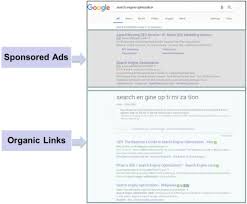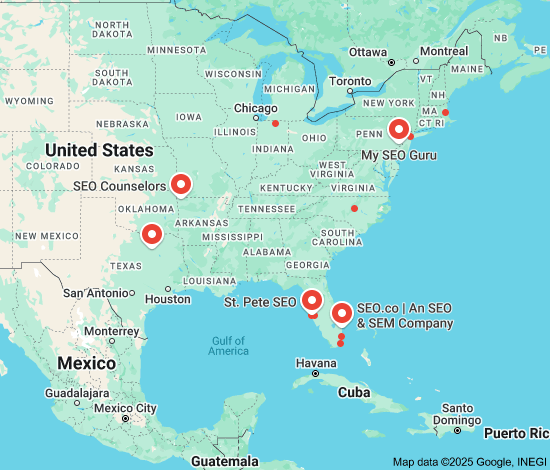Search Engine Marketing: Boosting Your Online Presence
In today’s digital age, having a strong online presence is crucial for businesses of all sizes. With millions of websites vying for attention, how can you ensure that your brand stands out? This is where Search Engine Marketing (SEM) comes into play.
Search Engine Marketing is a powerful and effective strategy that aims to increase a website’s visibility in search engine results pages (SERPs). It encompasses various techniques, including search engine optimization (SEO) and pay-per-click (PPC) advertising, to drive targeted traffic to your website.
One of the primary components of SEM is SEO. SEO involves optimizing your website’s content, structure, and technical aspects to improve its ranking on search engine results. By understanding the algorithms used by search engines like Google, Bing, and Yahoo!, you can strategically optimize your website to appear higher in the SERPs.
Keywords are at the core of SEO. These are the words or phrases that users input into search engines when looking for information or products. By conducting thorough keyword research and incorporating relevant keywords into your website’s content, meta tags, headings, and URLs, you can increase your chances of appearing in relevant search results.
Another aspect of SEM is PPC advertising. This involves bidding on specific keywords or phrases through platforms like Google Ads or Bing Ads. When users search for those keywords, your ads will be displayed prominently at the top or bottom of the SERPs. You only pay when someone clicks on your ad, making it a cost-effective way to drive targeted traffic to your website.
PPC campaigns allow you to target specific demographics, locations, and interests. This level of targeting ensures that you reach the right audience who are more likely to convert into customers or clients. Additionally, PPC advertising provides valuable data and insights that can be used to refine your marketing strategies further.
The benefits of Search Engine Marketing are numerous. Firstly, it increases brand visibility and awareness, as your website appears prominently in search results. This exposure helps to establish credibility and trust with potential customers.
Secondly, SEM drives targeted traffic to your website. By appearing in relevant search results, you attract users who are actively searching for products or services like yours. This increases the likelihood of conversions, whether it be a purchase, sign-up, or inquiry.
Furthermore, SEM provides measurable results. With tools like Google Analytics, you can track the performance of your SEO efforts and PPC campaigns. This data allows you to analyze visitor behavior, conversion rates, and return on investment (ROI), enabling you to make informed decisions about your marketing strategies.
However, it’s important to note that SEM is an ongoing process. Search engines constantly update their algorithms and competition is fierce. Regular monitoring and optimization are necessary to maintain and improve your online presence.
In conclusion, Search Engine Marketing is an essential tool for businesses looking to boost their online presence. By combining SEO techniques with PPC advertising, you can increase brand visibility, drive targeted traffic, and achieve measurable results. Embrace the power of SEM and watch your business thrive in the digital landscape.
7 Essential Tips for Effective Search Engine Marketing
- Research your keywords
- Optimize for local search
- Create quality content
- Use meta tags
- Build backlinks
- Track performance
- Stay up-to-date with algorithm changes
Research your keywords
When it comes to Search Engine Marketing (SEM), one tip stands out as a fundamental aspect of success: research your keywords. Keywords are the foundation of any effective SEM strategy, and understanding how to choose and utilize them can make a significant difference in your online visibility and reach.
Keyword research involves identifying the words or phrases that people use when searching for products, services, or information related to your business. By targeting the right keywords, you can ensure that your website appears in relevant search results, attracting potential customers who are actively seeking what you offer.
To begin your keyword research journey, put yourself in the shoes of your target audience. Consider what they might type into a search engine when looking for products or services similar to yours. Brainstorm a list of potential keywords and phrases that align with your business offerings.
Next, leverage keyword research tools like Google Keyword Planner or SEMrush to expand on your initial list and discover additional relevant keywords. These tools provide valuable insights into search volume, competition level, and other metrics that help you make informed decisions about which keywords to target.
When selecting keywords, aim for a balance between search volume and competition. High-volume keywords may seem enticing due to their popularity but can be highly competitive. On the other hand, low-volume keywords might have less competition but may not drive enough traffic. Finding the sweet spot where there is a decent search volume with manageable competition is key.
Once you have identified your target keywords, strategically incorporate them into various elements of your website. This includes page titles, meta descriptions, headings, content body, URLs, and image alt tags. However, it’s important not to overstuff your content with keywords as it can negatively impact user experience and search engine rankings.
Regularly monitor the performance of your chosen keywords using analytics tools like Google Analytics or platform-specific analytics provided by advertising platforms such as Google Ads or Bing Ads. Analyzing keyword performance helps you understand which ones are driving the most traffic, conversions, and engagement. This data allows you to refine your SEM strategy and focus on the keywords that yield the best results.
Remember, keyword research is an ongoing process. As trends and consumer behavior evolve, new keywords may emerge, and existing ones may lose relevance. Stay updated with industry trends, monitor your competitors’ keyword strategies, and adapt your approach accordingly.
In conclusion, thorough keyword research is a vital step in any successful Search Engine Marketing campaign. By understanding the language of your target audience and strategically incorporating relevant keywords into your website’s content, you can increase your online visibility and attract valuable organic traffic. Keep researching, analyzing, and refining your keyword strategy to stay ahead in the ever-evolving world of SEM.
Optimize for local search
Optimize for Local Search: Reaching Your Nearby Customers
When it comes to search engine marketing (SEM), one valuable tip that should not be overlooked is optimizing for local search. With the rise of mobile usage and the increasing popularity of “near me” searches, targeting your local audience can significantly boost your business’s visibility and attract nearby customers.
Local search optimization focuses on improving your website’s visibility in location-based search results. By incorporating local SEO strategies, you can ensure that your business appears when users in your area search for products or services you offer.
Here are a few key steps to optimize for local search:
- Claim and Optimize Your Google My Business Listing: Start by claiming your Google My Business (GMB) listing, a free tool provided by Google. Fill out all the necessary information about your business, including address, phone number, website URL, hours of operation, and relevant categories. This will help Google understand your business and display accurate information to potential customers.
- Consistent NAP Information: NAP stands for Name, Address, and Phone number. Ensure that this information is consistent across all online directories and platforms where your business is listed. Inconsistencies can confuse both search engines and users, impacting your local search rankings.
- Local Keywords: Incorporate relevant local keywords throughout your website’s content. Consider including location-specific terms in titles, headings, meta descriptions, and body text. This helps search engines associate your website with specific locations.
- Online Reviews: Encourage satisfied customers to leave reviews on platforms like Google My Business, Yelp, or industry-specific review sites. Positive reviews not only build trust with potential customers but also influence local search rankings.
- Local Citations: A citation is an online mention of your business’s name, address, and phone number (NAP). Ensure that these citations are accurate across various online directories such as Yelp, Yellow Pages, and local chamber of commerce websites. This helps search engines validate your business’s legitimacy and improve local search rankings.
- Local Content: Create content that is relevant to your local audience. This can include blog posts, articles, or guides that address topics specific to your area. By providing valuable information tailored to your local community, you can attract more local visitors and improve your local search rankings.
Optimizing for local search is a powerful strategy to connect with customers in your immediate vicinity. By implementing these tips, you can increase your business’s visibility in location-based searches and attract nearby customers who are actively seeking the products or services you offer. Embrace the potential of local search optimization and watch as your business flourishes within your community.
Create quality content
Create Quality Content: The Key to Successful Search Engine Marketing
When it comes to search engine marketing (SEM), creating quality content is an essential tip that cannot be overlooked. In a digital landscape where competition is fierce and algorithms are constantly evolving, producing high-quality and relevant content is the key to success.
Search engines like Google prioritize websites that provide valuable and engaging content to users. By focusing on creating quality content, you not only enhance your website’s visibility but also establish credibility and trust with your audience.
One of the first steps in creating quality content is understanding your target audience. Research their needs, preferences, and pain points to ensure that your content resonates with them. By addressing their specific concerns and providing solutions, you can position yourself as an authority in your industry.
In addition, conducting thorough keyword research is crucial for optimizing your content for search engines. Identify relevant keywords that align with your business and incorporate them naturally throughout your content. This helps search engines understand the context of your content and improves its visibility in search results.
When crafting your content, focus on providing value rather than solely promoting your products or services. Share informative articles, how-to guides, case studies, or industry insights that educate and engage your audience. By offering valuable information, you build trust with your readers and encourage them to return for more.
Another important aspect of quality content creation is ensuring that it is well-written and error-free. Poor grammar or spelling mistakes can negatively impact the perception of professionalism and credibility. Take the time to proofread and edit your content before publishing it to maintain a high standard of quality.
Furthermore, make sure that your content is visually appealing by incorporating images, videos, infographics, or other multimedia elements when appropriate. Visuals not only enhance the user experience but also make the content more shareable on social media platforms.
Lastly, regularly update and refresh your existing content to keep it relevant and up-to-date. Search engines favor websites that consistently provide fresh and valuable content. Consider repurposing your content into different formats, such as podcasts or videos, to reach a wider audience.
In conclusion, creating quality content is a fundamental aspect of successful search engine marketing. By understanding your audience, incorporating relevant keywords, providing value, and maintaining high writing standards, you can improve your website’s visibility and establish credibility in the digital realm. Remember, quality content is the foundation upon which your SEM efforts can thrive.
Use meta tags
Unlocking the Power of Meta Tags in Search Engine Marketing
When it comes to Search Engine Marketing (SEM), one powerful tool that often gets overlooked is the use of meta tags. These small snippets of code hidden within your website’s HTML provide search engines with valuable information about your web pages. By optimizing and utilizing meta tags effectively, you can significantly enhance your website’s visibility and ranking in search engine results.
Meta tags come in different forms, but two key ones are the meta title tag and meta description tag. The meta title tag is a concise, keyword-rich title that appears as the clickable headline in search engine results. It should accurately summarize the content of the page while enticing users to click through to your website.
Crafting an attention-grabbing meta title tag is crucial as it helps search engines understand what your page is about and entices users to visit your site. Incorporate relevant keywords that align with user search queries to increase the chances of appearing higher in search results.
Next, we have the meta description tag. This is a brief summary or snippet that appears below the meta title tag in search engine results. While not directly impacting rankings, a well-crafted meta description can significantly influence click-through rates.
Make sure your meta description provides a compelling overview of what users can expect when they click on your link. It should be concise, engaging, and accurately reflect the content on your web page. Including relevant keywords here can also help catch users’ attention and improve visibility.
When optimizing meta tags, remember to keep them unique for each page on your website. This ensures that search engines can properly index and differentiate between your pages, leading to more accurate rankings and targeted traffic.
While meta tags are essential for SEM success, it’s important not to rely solely on them for higher rankings. They should be part of a comprehensive SEO strategy that includes quality content creation, keyword research, link building, and other optimization techniques.
Regularly review and update your meta tags as needed. Stay informed about changes in search engine algorithms and best practices to ensure your meta tags remain effective and aligned with current SEO trends.
In conclusion, meta tags play a vital role in Search Engine Marketing by providing search engines with valuable information about your web pages. Optimizing your meta title and description tags can improve your website’s visibility, click-through rates, and ultimately drive targeted traffic to your site. Incorporate this tip into your SEM strategy and unlock the power of meta tags for better online success.
Build backlinks
Boost Your Search Engine Marketing with Backlinks
When it comes to search engine marketing (SEM), one powerful strategy that should not be overlooked is building backlinks. Backlinks are links from other websites that direct users to your site. They not only drive traffic but also play a crucial role in improving your website’s search engine rankings.
Search engines view backlinks as votes of confidence and authority. When reputable websites link to your content, it signals to search engines that your website is trustworthy and relevant. As a result, search engines are more likely to rank your website higher in search results, making it easier for potential customers or clients to find you.
So, how can you build backlinks effectively? Here are a few tips:
- Create High-Quality Content: The foundation of building backlinks lies in creating valuable and engaging content. When you produce high-quality articles, blog posts, infographics, or videos, other websites will naturally want to link to your content as a valuable resource for their own audience.
- Guest Blogging: Reach out to influential blogs or websites in your industry and offer to write guest posts for them. In exchange for providing them with quality content, they may allow you to include a link back to your website within the post or author bio section. This not only helps build backlinks but also exposes your brand to a wider audience.
- Build Relationships: Networking and building relationships with other website owners, bloggers, influencers, and industry experts can lead to natural link-building opportunities. Engage with them on social media platforms, participate in relevant forums or communities, and collaborate on projects where linking back to each other’s websites makes sense.
- Directory Submissions: Submitting your website URL and information to reputable online directories can help generate backlinks. Look for directories specific to your industry or location that have high domain authority and good reputations.
- Monitor Competitors: Keep an eye on your competitors’ backlink profiles to identify potential opportunities for your own website. Tools like Ahrefs, Moz, or SEMrush can provide insights into their backlink sources, helping you discover websites that might be interested in linking to your content as well.
Remember, the quality of backlinks matters more than the quantity. Focus on acquiring links from authoritative and relevant websites within your industry. Avoid low-quality link-building practices such as buying links or participating in link schemes, as these can harm your website’s reputation and rankings.
Building backlinks is an ongoing process that requires time and effort. Consistently creating valuable content, reaching out to relevant websites, and nurturing relationships will gradually increase the number of quality backlinks pointing to your site. Over time, this will significantly enhance your search engine marketing efforts and improve your online visibility.
Track performance
One of the most crucial aspects of search engine marketing (SEM) is tracking performance. In the ever-evolving digital landscape, it’s essential to monitor and analyze your SEM efforts to ensure that you’re maximizing your return on investment (ROI) and driving meaningful results.
Tracking performance allows you to gain valuable insights into the effectiveness of your SEM campaigns. By utilizing tools like Google Analytics or other analytics platforms, you can measure key metrics such as website traffic, click-through rates (CTR), conversion rates, and bounce rates.
These metrics provide a clear picture of how your SEM strategies are performing. For instance, by monitoring website traffic, you can see if your efforts are generating a steady flow of visitors to your site. If not, it may be an indication that adjustments need to be made to your SEO or PPC campaigns.
Click-through rates are another important metric to track. They indicate how often users click on your ads when they appear in search results. A low CTR might suggest that your ad copy or targeting needs improvement.
Conversion rates are perhaps the most critical metric when it comes to tracking performance. They measure the percentage of visitors who complete a desired action on your website, such as making a purchase or filling out a contact form. By monitoring conversion rates, you can determine which keywords or ad campaigns are driving the most valuable traffic and adjust your strategies accordingly.
Bounce rates provide insights into user behavior on your site. A high bounce rate indicates that visitors are leaving shortly after arriving, potentially due to irrelevant content or poor user experience. By identifying pages with high bounce rates, you can optimize them for better engagement and retention.
Regularly reviewing and analyzing these metrics helps you identify strengths and weaknesses in your SEM efforts. It enables you to make data-driven decisions about where to allocate resources and optimize campaigns for better performance.
Moreover, tracking performance allows you to stay agile in an ever-changing digital landscape. Search engine algorithms evolve constantly, and consumer behaviors and preferences shift over time. By monitoring performance, you can adapt your strategies to align with these changes, staying ahead of the competition and maximizing your SEM efforts.
In conclusion, tracking performance is a vital tip for successful search engine marketing. By closely monitoring key metrics, you gain insights into the effectiveness of your SEM campaigns and can make informed decisions to optimize your strategies. Embrace the power of data and watch your SEM efforts flourish in today’s digital world.
Stay up-to-date with algorithm changes
Staying Up-to-Date with Algorithm Changes: A Key to Search Engine Marketing Success
Search engine algorithms are constantly evolving, which makes staying up-to-date with these changes crucial for effective search engine marketing (SEM). As search engines like Google refine their algorithms to deliver the most relevant and valuable results to users, it’s essential for marketers to adapt their strategies accordingly.
Algorithm updates can have a significant impact on your website’s visibility and ranking in search engine results pages (SERPs). By keeping yourself informed about algorithm changes, you can make proactive adjustments to your SEM efforts and stay ahead of the competition.
One of the first steps in staying up-to-date is to follow reputable industry blogs, forums, and news sources that regularly cover search engine algorithm updates. These sources often provide valuable insights into the changes being made and offer advice on how to adjust your SEO strategies accordingly.
Additionally, search engines themselves often release official guidelines and announcements regarding algorithm updates. Keeping an eye on these resources can provide invaluable information on what factors are being prioritized or penalized by the algorithms. Google’s Webmaster Central Blog is an excellent example of a reliable source for such information.
Another important aspect is networking with other professionals in the field. Attending industry conferences, participating in webinars, or joining online communities can help you stay connected with fellow marketers who are also navigating algorithm changes. Sharing knowledge and experiences can provide fresh perspectives and help you adapt your SEM strategies effectively.
Regularly monitoring your website’s performance through analytics tools is crucial as well. By analyzing data such as organic traffic fluctuations or changes in keyword rankings, you can identify potential impacts of algorithm updates on your website. This data-driven approach enables you to make informed decisions when adjusting your SEM tactics.
It’s important to note that not all algorithm changes will have a significant impact on your website’s performance. Some updates may be minor tweaks while others may introduce major shifts in ranking factors. Understanding which changes are more likely to affect your website and focusing on those areas can help you allocate your resources effectively.
In conclusion, staying up-to-date with search engine algorithm changes is an essential aspect of successful search engine marketing. By following industry news, official guidelines, networking with professionals, and monitoring your website’s performance, you can adapt your strategies to align with the latest algorithms. Embrace the ever-evolving nature of search engines, and you’ll be well-equipped to maintain a strong online presence and achieve SEM success.




